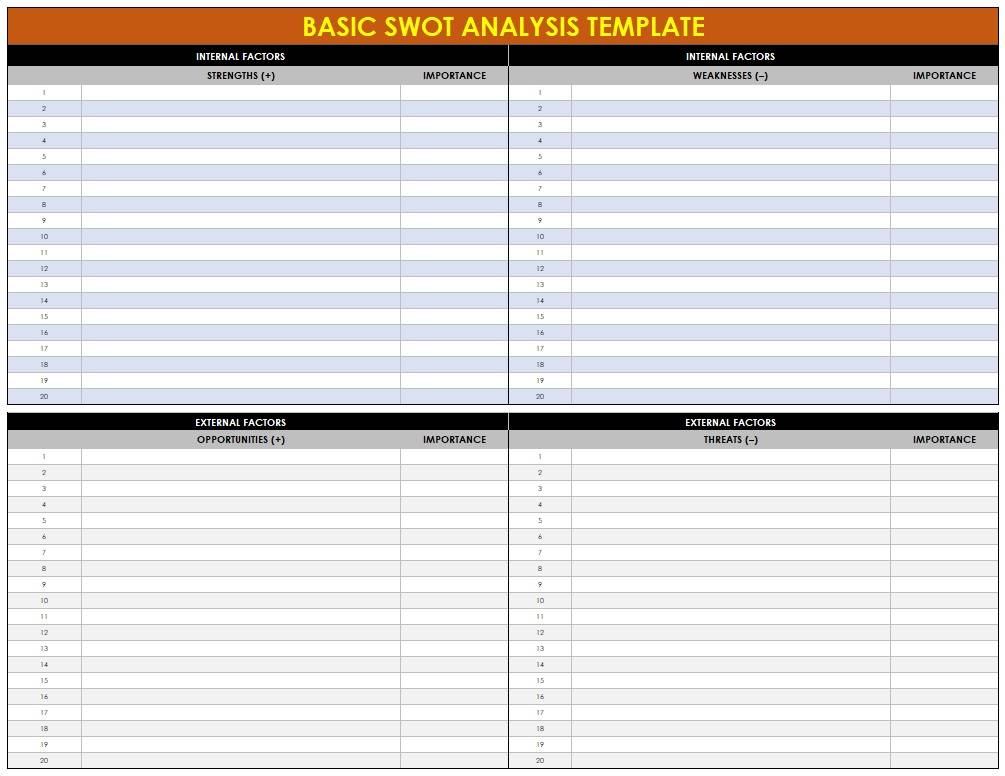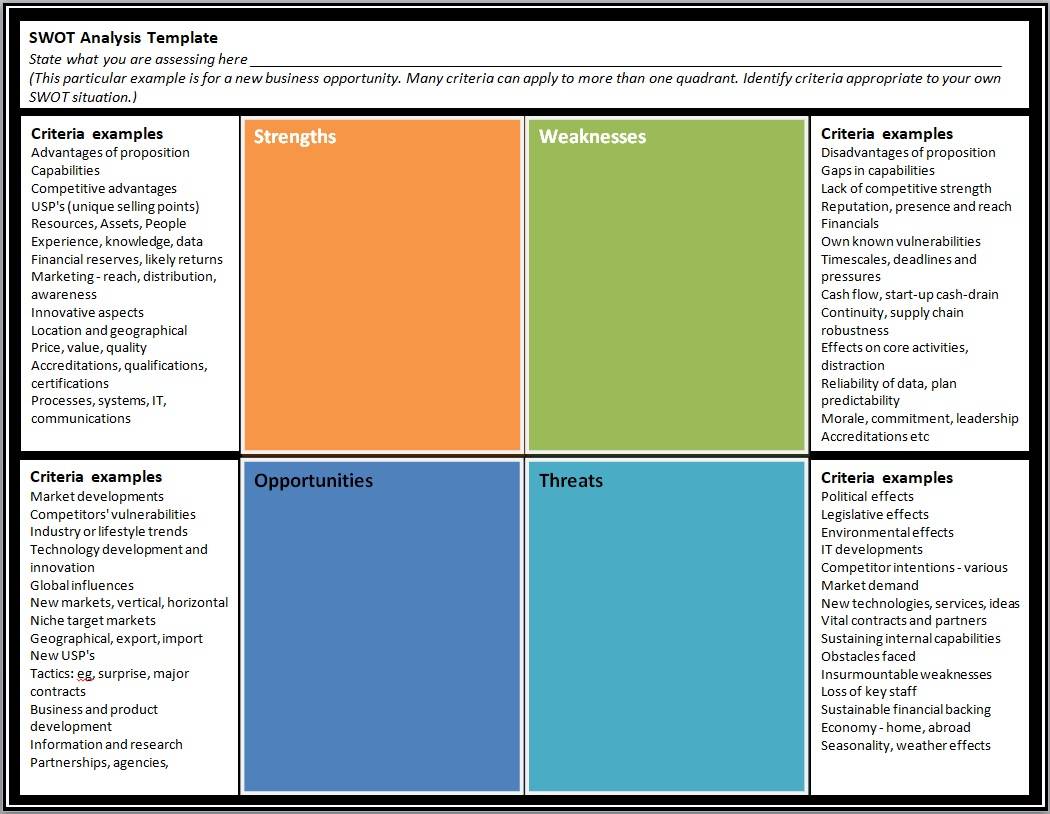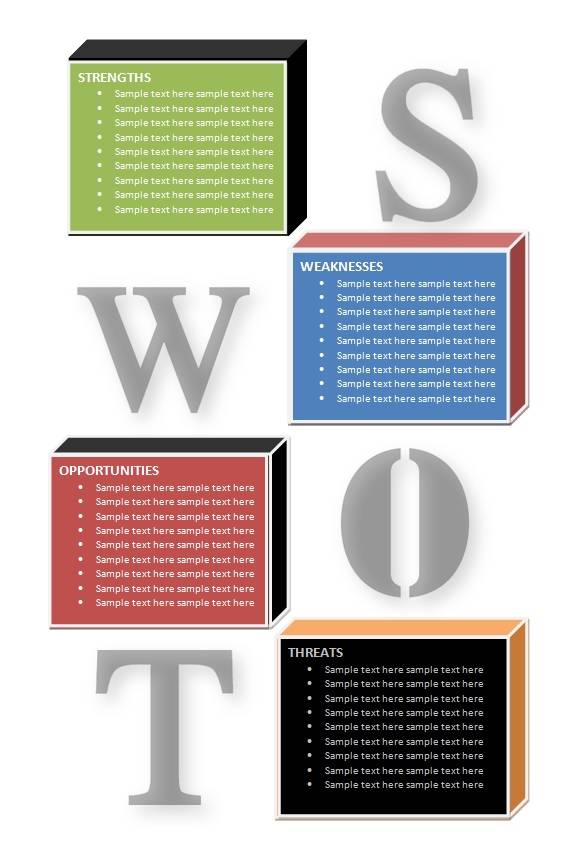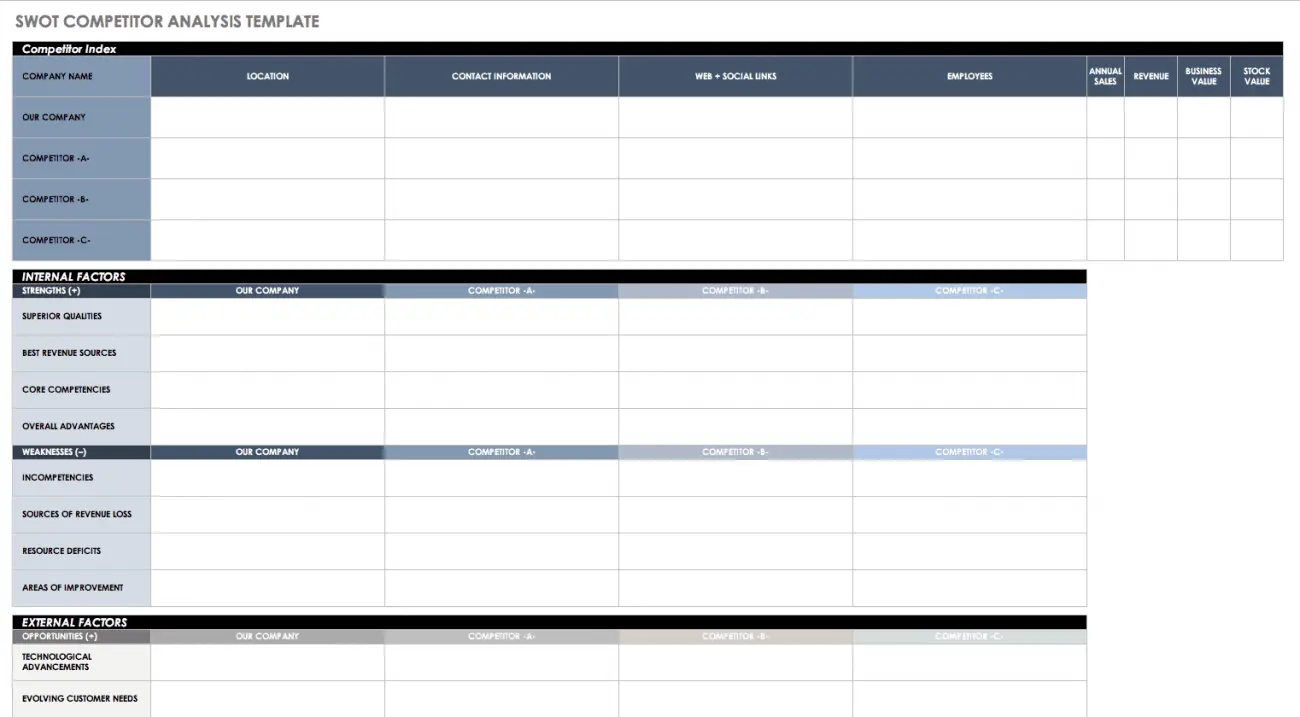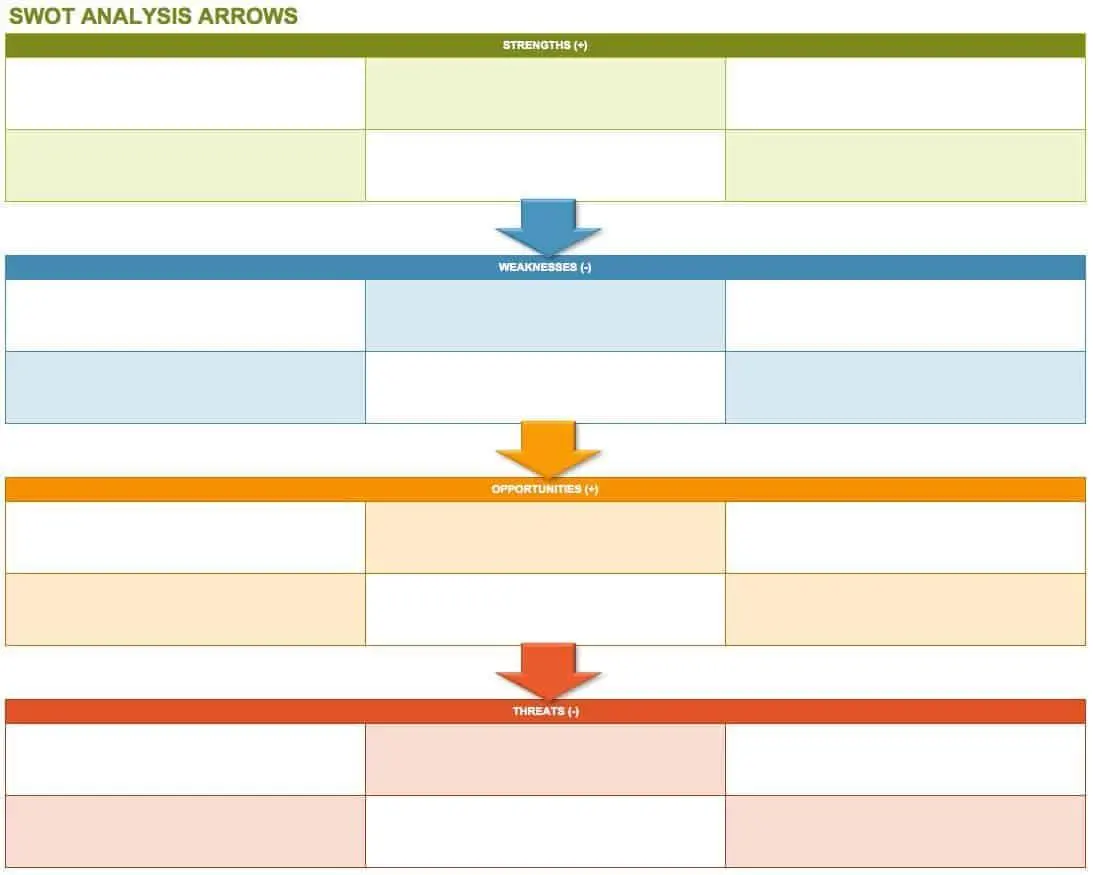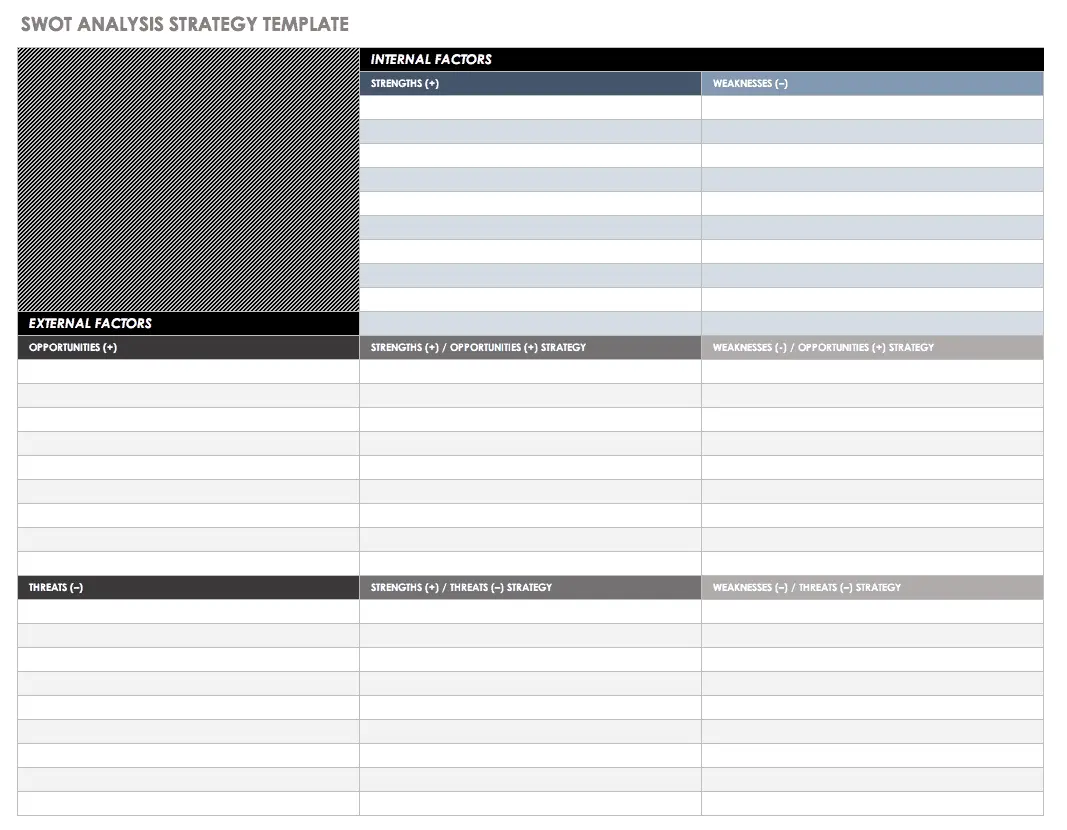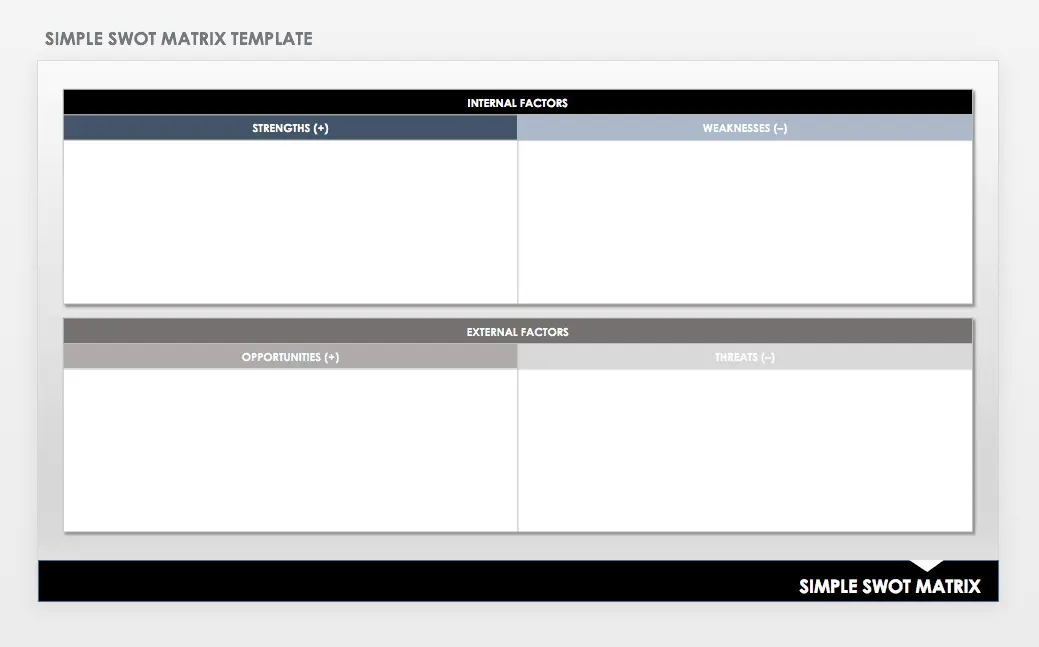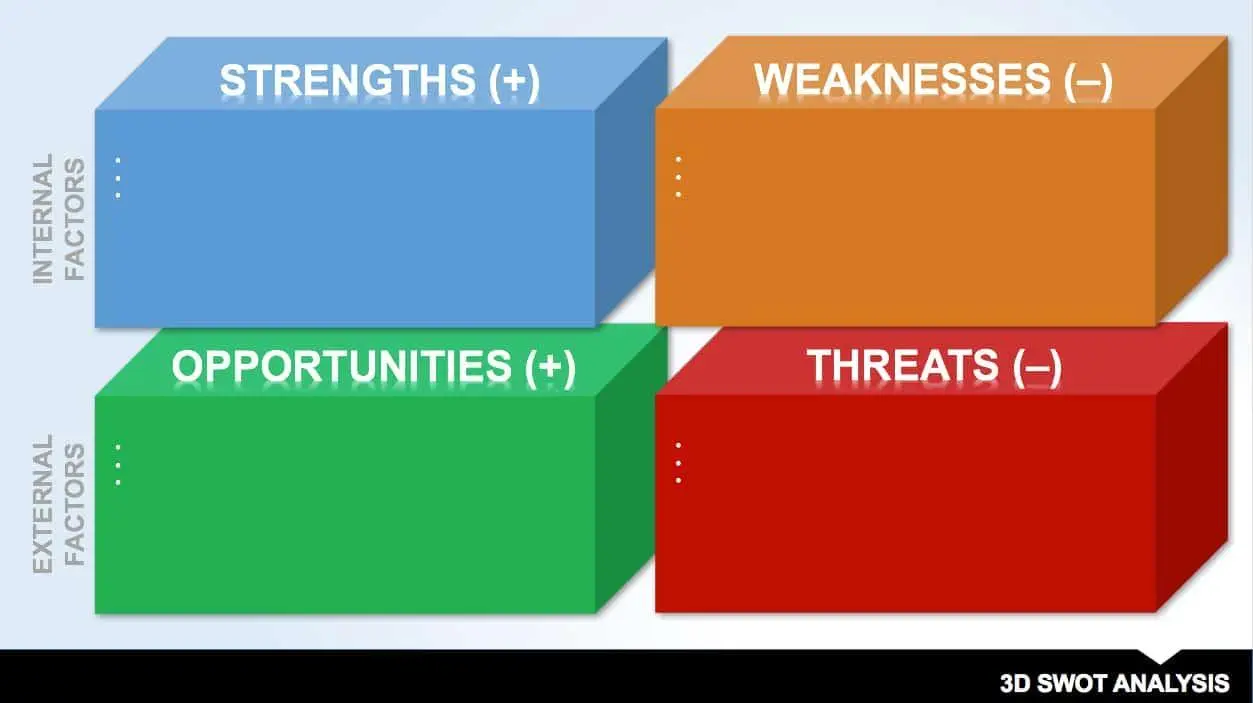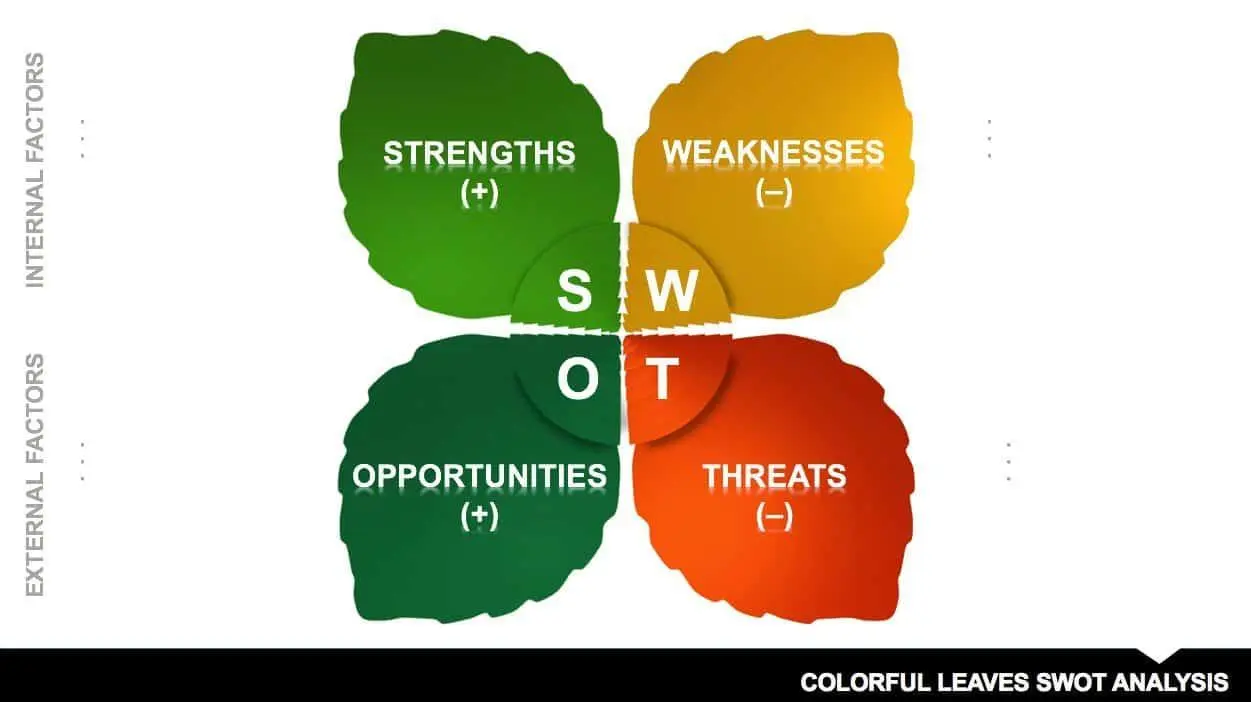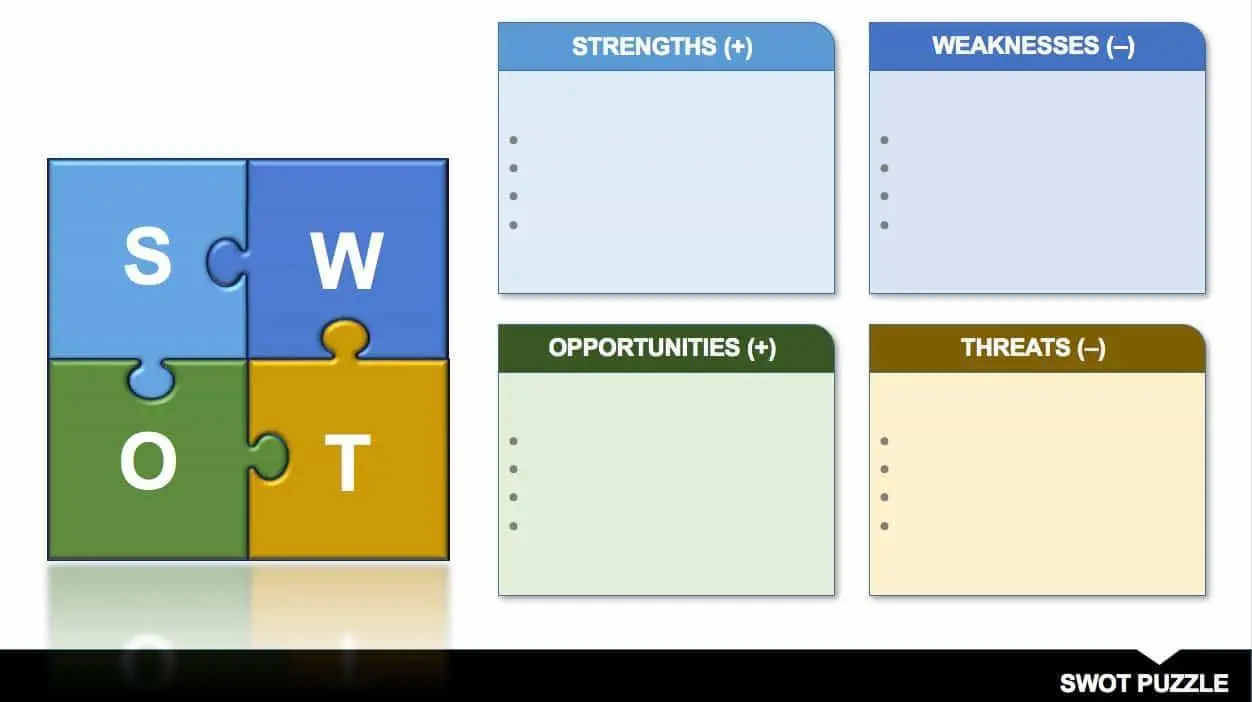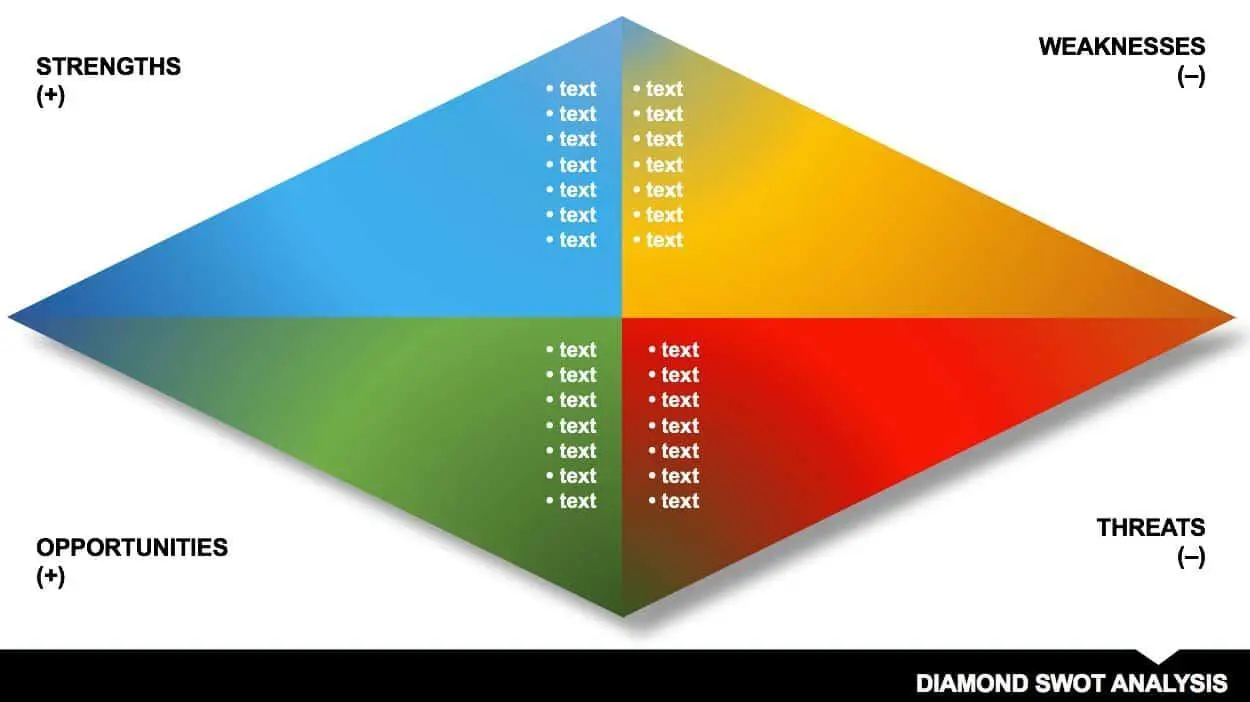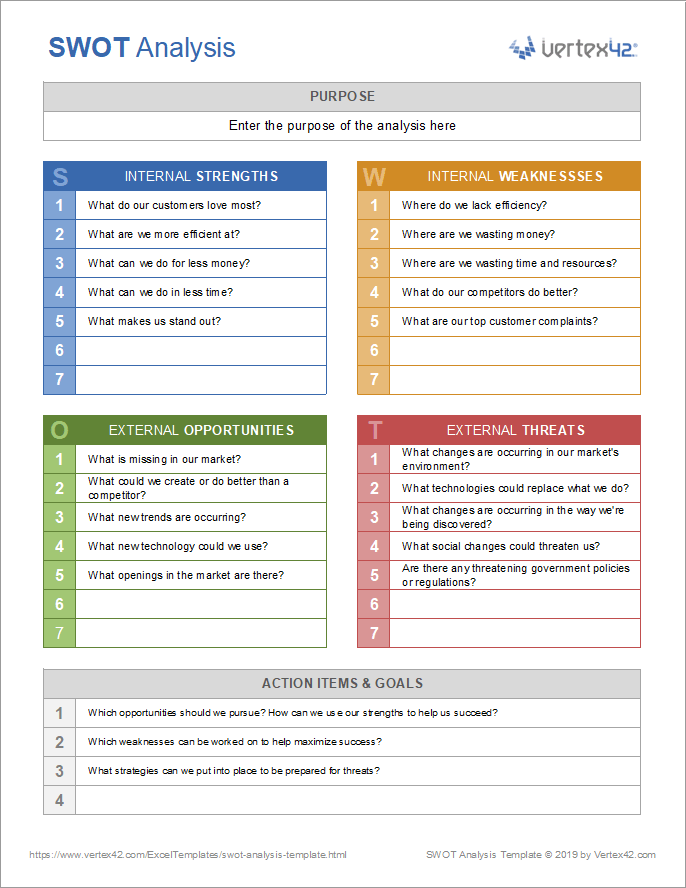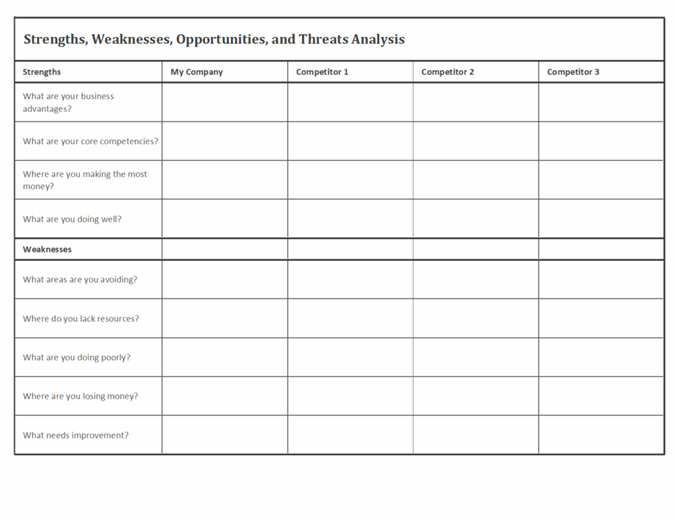The best tool to analyze all possible threats, and risk factors which can kill your strengths and opportunities, is known as SWOT analysis. To conduct this tool, you will need to have a professional SWOT analysis template. It designs to differentiate between internal factors and favorable circumstances. Whereas; it also guides how to handle external factors and unfavorable circumstances. The idea of using SWOT analysis is to enable management in deciding crucial business matters by estimating what they have (Strengths) and how well they can use them (opportunities) against possible ventures (Threats and weakness). Once all possible accessible factors are determined, a management can decide whether to start a new project or not.
What is Meant by SWOT?
SWOT analysis is a famous part as well as a tool of strategic planning and control. It refers to four situations where a business can be affected directly or indirectly. These are given as follows;
Strengths: Refers to internal qualities, powers and skills.
Weakness: Indicates what are your within-organization draw-points, tactlessness and limits.
Opportunities: Depicts, uncontrollable events, possibilities and tactics.
Threats: Possible danger, losses and competitive flaw.
Importance of SWOT Analysis;
SWOT Analysis template is a tremendously encouraging tool not only for appraising diverse projects, yet it also highlights unidentified hikes. It uncovers a perfect foundation to compose as well as denounce any action prior to involving in any strategy. Being very easy to develop and prepare, a SWOT analysis is a very influential method. Therefore, it assists an organization or a management to thoroughly contemplate the obligations of the project or a business.
SWOT Analysis Application to Business Functionality;
Here are some critical business functionalities where SWOT analysis can be used wisely:
• Business planning
• Strategic planning
• Competitor evaluation
• Marketing
• Business/product development
• Research reports
